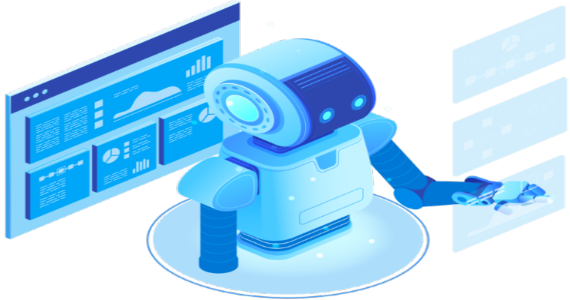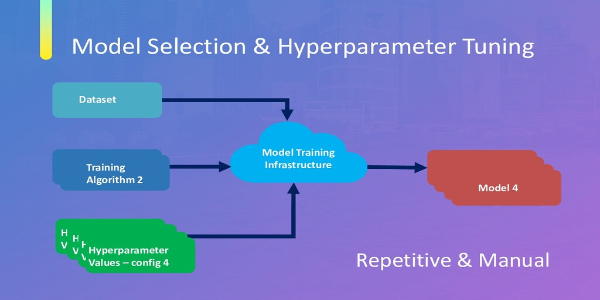Introduction

Do you ever wonder how companies develop and train machine learning models without experts? Well, the secret is in the field of Automated Machine Learning (AutoML). AutoML simplifies the process of building and tuning machine learning models for organizations to harness the power of these technologies. Figure 1 gives a visual representation of AutoML. In this blog, we’ll explore the basics of AutoML and its methods and take a look at some of its key benefits and limitations. Get ready to be amazed by the power of AutoML.
Learning Objectives
- Understand the basics of AutoML and its methods
- Explore the key benefits of using AutoML
- Understand the limitations of AutoML
- Understand the practical impact of AutoML
This article was published as a part of the Data Science Blogathon.
Table of Contents
- What is AutoML?
- Methods of AutoML: A Comprehensive Overview
- Effortless ML: The Merits of AutoML
- AutoML: A Closer Look at the Drawbacks
- AutoML in Practice: How Companies are Automating Machine Learning?
- Conclusion
What is AutoML? The Future of Machine Learning
AutoML is a game-changer in the field of machine learning. It is a training of machine learning models to automate the process of selecting and tuning algorithms. This includes everything from data preprocessing to selecting the most suitable model for the given task. AutoML tools handle hyperparameter tuning and model selection tasks, which typically require time and expertise. With AutoML, users without experience in machine learning can train high-performing models with minimal effort. Whether you’re a small business owner, a researcher, or a data scientist, AutoML helps to achieve your goals with less time and effort. Examples of popular AutoML platforms include Google Cloud AutoML, H2O.ai, and DataRobot.
AutoML provides explainable AI to improve the interpretability of the model. This allows data scientists to understand how the model makes predictions, which is particularly helpful in healthcare, finance, and autonomous systems. This can be used to identify bias in data and prevent wrong predictions. For example, AutoML can be used in healthcare for disease diagnosis by analyzing medical images, in finance for fraud detection, in retail for product recommendations, and in transportation for self-driving cars. Figure 2 shows the AutoML process.

Source – witside.com
AutoML Methods: A Comprehensive Overview
AutoML automates the use of machine learning for real-world problems. This includes tasks such as algorithm selection, hyperparameter optimization, and feature engineering. Many different methods are being developed to tackle the various aspects of the problem. Some popular approaches are given below
- Neural Architecture Search (NAS): This method uses a search algorithm to automatically find the best neural network architecture for a given task and dataset.
- Bayesian Optimization: This method uses a probabilistic model to guide the search for the best set of hyperparameters for a given model and dataset.
- Evolutionary Algorithms: This method uses evolutionary algorithms such as genetic algorithms or particle swarm optimization to search for the best set of model hyperparameters.
- Gradient-based methods: This method uses gradient-based optimization techniques like gradient descent, Adam, etc., to optimize the model hyperparameters.
- Transfer Learning: This method uses a pre-trained model on a similar task or dataset as a starting point and then fine-tunes it on the target task and dataset.
- Ensemble methods: This method combines multiple models to create a more robust and accurate final model.
- Multi-modal methods: This method uses multiple data modalities such as image, text, and audio to train models and improve performance.
- Meta-learning: This method uses a model to learn how to learn from data, which can improve the efficiency of the model selection process.
- One-shot or few-shot learning: This method can learn to recognize new classes from only one or a few examples.
AutoML is broadly classified into a model selection and hyperparameter tuning, as shown in Fig 3. Many different AutoML tools and libraries are available in the market, such as Google’s AutoML, H2O.ai’s AutoML, DataRobot, TPOT, and auto-sklearn. These tools provide a wide range of functionalities that can be integrated into existing workflows.

Source – speakerdeck.com
Effortless Machine Learning: The Merits of AutoML in Machine Learning
AutoML simplifies the machine learning process and brings many benefits, some of which are given below:
- Time-saving: Automating the process of model selection and hyperparameter tuning can save a significant amount of time for data scientists and machine learning engineers.
- Accessibility: AutoML allows users with little or no experience with machine learning to train high-performing models.
- Improved performance: AutoML methods can often find better model architectures and hyperparameter settings than manual methods, resulting in improved model performance.
- Handling large amounts of data: AutoML can handle large amounts of data and find the best model even with more features.
- Scalability: AutoML can scale to large datasets and complex models, making it well-suited to big data and high-performance computing environments.
- Versatility: AutoML can be used in various industries and applications, including healthcare, finance, retail, and transportation.
- Cost-effective: AutoML can save resources and money in the long run by reducing the need for manual labor and expertise.
- Reduced risk of human error: Automating the model selection and hyperparameter tuning process can reduce the risk of human error and improve the reproducibility of results.
- Increased Efficiency: AutoML can be integrated with other tools and processes to increase efficiency in the data pipeline.
- Handling multiple data modalities: AutoML can handle multiple data modalities such as image, text, and audio to train models and improve performance.
AutoML offers several benefits for data scientists and engineers that save time and resources by automating tedious and time-consuming tasks. This also improves the interpretability of the model by providing explainable AI. These combined benefits make AutoML a valuable tool in many industries and applications.

AutoML: A Closer Look at the Drawbacks
AutoML has become a popular tool for data scientists and analysts. However, it has limitations. There are following limitations are given below
- Limited control over the model selection and hyperparameter tuning process: AutoML methods operate based on predefined algorithms and settings, and users may have limited control over the final model.
- Limited interpretability of the resulting model: AutoML methods can be opaque, making it difficult to understand how the model makes its predictions.
- Higher costs than manually designing and training a model: AutoML tools and infrastructure can be costly to implement and maintain.
- Difficulty in incorporating domain-specific knowledge into the model: AutoML relies on data and pre-defined algorithms, which can be less effective when incorporating domain-specific knowledge.
- Potential for poor performance on edge cases or unusual data distributions: AutoML methods may not perform well on data that is significantly different from the training data.
- Limited support for certain models or tasks: AutoML methods may not be well-suited to all models or tasks.
- Dependence on large amounts of labeled data: AutoML methods typically require large amounts of labeled data to train models effectively.
- Limited ability to handle data with missing values or errors: AutoML methods may not perform well on data with missing values or errors.
- Limited ability to explain the model’s predictions and decisions: AutoML methods can be opaque, making it difficult to understand how the model makes its predictions, which can be an issue for certain applications and industries.
- Overfitting: AutoML methods may lead to overfitting on the training data if not properly monitored, which can result in poor performance on new unseen data.
AutoML is a powerful tool for automating the machine-learning process, but it is with its limitations. It is important to consider these limitations in the presence of expert supervision to validate the results.
AutoML in Practice: How Companies are Automating Machine Learning?
A few practical examples of AutoML are given below:
- Google’s AutoML Vision allows users to train custom machine-learning models for image recognition using their image datasets
- H2O.ai’s AutoML enables data scientists and analysts to automatically train and optimize machine learning models without having to write code
- DataRobot provides an AutoML platform that can automatically build, evaluate and deploy machine learning models for a wide range of use cases, including fraud detection, customer churn prediction, and predictive maintenance
- Amazon SageMaker is a fully managed service that enables data scientists and developers to quickly and easily build, train, and deploy machine learning models at scale
- IBM Watson AutoAI is a platform that automates the process of building, training, and deploying machine learning models and provides interpretability and explainability features that help users understand the models’ decision-making processes
- Microsoft Azure ML is a cloud-based platform that provides a wide range of tools and services for building, deploying, and managing machine learning models, including AutoML capabilities.
These are a few examples of how companies leverage AutoML in different industries to automate model building and hyperparameter tuning, allowing data scientists to focus on model selection and evaluation.
Conclusion
AutoML automates the process of building and tuning machine-learning models. This method uses algorithms to search the best model and hyperparameters rather than relying on human expertise. AutoML includes increased efficiency and the ability to handle large amounts of data. It can be useful in the shortage of experienced machine learning practitioners. However, there are also limitations to AutoML. It can be computationally expensive and difficult to interpret the results of the automated search process. Additionally, the practical use of AutoML is limited by the data’s quality and computational resources’ availability. In practice, AutoML is mainly used in an industry setting to improve productivity and model performance in scenarios like image, speech, text, and other forms of data.
Key Takeaways:
- Simplify the process of building and training models.
- AutoML suffers limitations such as a lack of control over the model selection process, huge data requirements, computationally expensive, and overfitting issues.
- Expert supervision is important to validate the results of AutoML to counter available limitations.
- AutoML will improve performance and usability with recent meta-learning and active learning advancements.
The media shown in this article is not owned by Analytics Vidhya and is used at the Author’s discretion.




